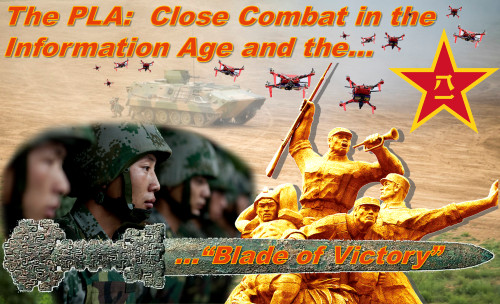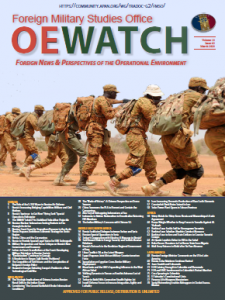 [Editor’s Note: Today’s post is excerpted from last month’s (March 2020) edition of the OE Watch, which in turn analyzes two articles from Jiefangjun Bao (the People’s Liberation Army [PLA] Daily), published earlier this year.
[Editor’s Note: Today’s post is excerpted from last month’s (March 2020) edition of the OE Watch, which in turn analyzes two articles from Jiefangjun Bao (the People’s Liberation Army [PLA] Daily), published earlier this year.
The first article explores how China, our emergent pacing threat, proposes to counter a stronger “informatized” enemy possessing more advanced technology (a not-so-veiled reference to the United States). Offering a three-phased prescription, this article’s authors describe how the PLA could initially employ “flexible deception” and swift, coordinated, and violent assaults by small units via multiple axes of attack; followed by close entanglement and encirclement; culminating in a concentration of forces and deep fires to annihilate the enemy.
 The second article explores one aspect of battlefield intelligentization (i.e., the Chinese concept of applying Artificial Intelligence’s machine speed and processing power to military planning, operational command, and decision support) — specifically, how Chinese smart drone swarms could “destroy the enemy’s cross-domain joint capabilities and achieve combat objectives at a relatively small cost.”
The second article explores one aspect of battlefield intelligentization (i.e., the Chinese concept of applying Artificial Intelligence’s machine speed and processing power to military planning, operational command, and decision support) — specifically, how Chinese smart drone swarms could “destroy the enemy’s cross-domain joint capabilities and achieve combat objectives at a relatively small cost.”
Taken together, these articles provide valuable insights into how China’s PLA is thinking about countering the U.S. Army’s current force, the Multi-Domain Operations (MDO)-Capable Force in 2028, and the MDO-Ready Force in 2035 — Read on!]
Considering “The Ground Battlefield Under Informatized Conditions”
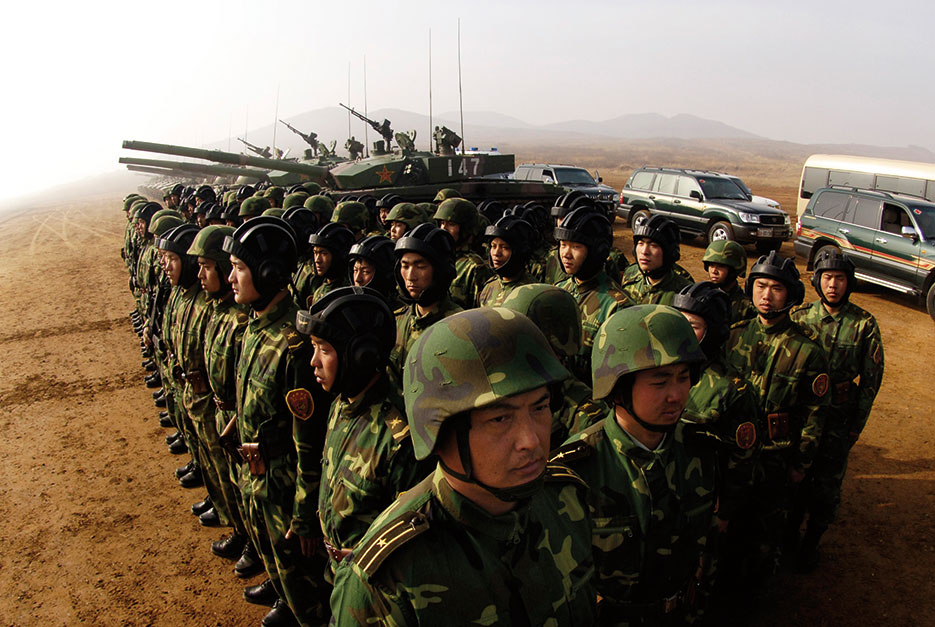
Strategies and tactics in warfare change as new technologies emerge. China has been striving to maintain pace with the modern world by developing strategies and tactics that complement these ongoing changes. One discipline that has been undergoing dramatic change is that of close-range combat due to the “informatization” of the battlefield. In the accompanying article, published in Jiefangjun Bao, two Chinese scholars discuss a close combat situation where China is the weaker military force, facing a stronger enemy that possesses advanced (informatized) technology. In the scenario, advanced technology allows China’s adversary to detect and acquire targets at long range, execute precise attacks from beyond line of sight, and conceal combat intent, posing a real challenge to Chinese forces trying to close their distance with the enemy to destroy it.
According to the article, there are three phases of “close combat” in the information age. Phase one combines various methods to get close to the enemy in planning. Phase two is the entanglement phase in which the fight is brought to close quarters. Phase three is the annihilation and destruction of enemy forces.
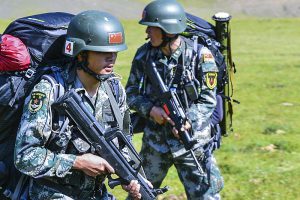
The article describes various measures that, coupled with having an intimate understanding of the strengths and weaknesses of both the enemy and friendly sides “as a foundation,” would be effective in closing the distance with the adversary with a reduced chance of detection. These measures include, for example, capitalizing on factors such as weather and geographical elements, which might degrade the capability of enemy reconnaissance devices and weapons platforms. The authors describe scenes in which small groups of soldiers approach from various routes, attacking “quickly and violently,” and networks of air defense firepower attack from varying altitudes and ranges. Another measure suggested is the use of “flexible deception,” such as putting out false intelligence to mislead the enemy.
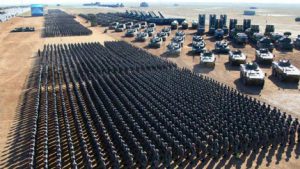
In phase two (entanglement) of “close combat,” the article explains that non-contact combat constitutes a major threat to the weaker side. The authors argue that in order to be victorious, it is essential to not only get closer, but to also employ a number of measures, be flexible in the employment of tactics, become “closely entangled” with the enemy, create an interlocked pattern of engagement with the enemy, and lessen the threat of attack by the enemy’s long-range firepower. They go on to describe various aggressive, multi-pronged and joint attack approaches, ensuring fighting takes place at close quarters, while also disrupting the enemy’s plans and patterns, and using integrated strength to wipe out key enemy targets while Chinese forces encircle the enemy. It is worth noting that the Chinese concept of “entanglement” is nothing new, but reflects their experience in the Korean War, where they would negate American airpower and artillery by “hugging” the American ground forces. The Americans would not call in artillery and air power on their own positions – except in extremis.
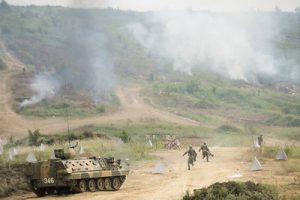
In the third phase (annihilation), the more superior the enemy is in information technology, the more they are likely to resort to asymmetric attack measures. Therefore, “take aim at the weak points of the strong enemy’s informatized platforms and combat arrangements…” Prioritize a selection of targets in the event not all targets can be destroyed. Concentrate superior forces. Finally, conduct both distant and close-in battle simultaneously.
The authors argue that despite the rise of informatized warfare, “close combat” has not gone away and in fact, “combat at short range may even be the main form of combat.” End OE Watch Commentary (Hurst)
“The less the enemy is able to fight close combat, the more
we [China] should step up our research of the issue of close combat on the informatized battlefield, and thereby firmly grasp the initiative.”
“With the rapid development of new and high technology with information technology as the core, the ground battlefield under informatized conditions is no longer restricted to the battlefield in the geographical sense.”
Source: Ye Huabin and Ai Zhengson, “信息时代如何“近敌”作战 (How to Conduct ‘Close Combat’ in the Information Age),” Jiefangjun Bao, 16 January 2020.
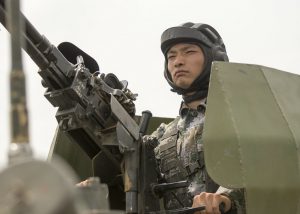
“Close combat,” as the name says, is combat operations against an enemy conducted at short range. With the rapid development of new and high technology with information technology as the core, the ground battlefield under informatized conditions is no longer restricted to the battlefield in the geographical sense. Profound change has occurred in the intention and extension [semantics; the formal definition and the further range of applicability] of the concept of the battlefield. Thus the methods of closing with the enemy to destroy him face new challenges. To accurately explore and understand how to fight close combat on the land battlefield under informatized conditions is important in terms of both theory and practice.
Of first importance in the conduct of close combat is to solve the problem of how to get close to the enemy…The strong enemy can detect and acquire targets at long range, execute precise attacks from beyond line of sight, conceal his combat intent, and make closing with the enemy to destroy him increasingly difficult. Thus with a full understanding of the strengths and weaknesses of the enemy and friendly sides as a foundation, integrate the use of measures of various kinds. First of all is many ways of evasion.… A second element is firepower as cover… A final element is flexible deception.
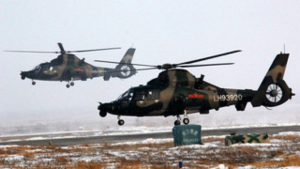
Combine forces and firepower, get entangled with the enemy and fight at close quarters… faced with a strong enemy, if you hope to be victorious you must not only solve the problems of “getting close,” you must also take various measures, employ tactics flexibly, get closely entangled with the enemy, create an interlocked pattern of engagement with the enemy, and lessen the threat of attack from the strong enemy’s long-range firepower and weapon platforms.
Annihilation and destruction aiding each other, put an end to the enemy in precise release of energy. The more superiority a side has in information technology, the more that side fears an opponent using “asymmetric” attack measures.
…The less the enemy is able to fight close combat, the more we should step up our research of the issue of close combat on the informatized battlefield, and thereby firmly grasp the initiative.
The “Blade of Victory”: A Chinese Perspective on Drone Swarms
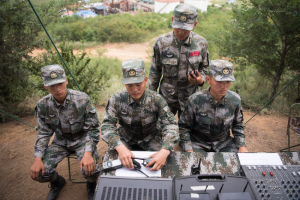
Chinese military strategists and academics have been focusing on artificial intelligence (AI) and how it will reshape the future battlefield. The application of AI’s capabilities to military planning, operations, and decision support even has its own Chinese buzzword: “intelligentized” warfare. The growing number of articles and studies describing different aspects of “intelligentized” warfare are a clear indication of where China is heading. One such article, published in Jiefangjun Bao, the Central Military Commission’s official newspaper, offers an in-depth look at the use of drone swarms on the future battlefield. The article focuses on the advantages and potential operations in which drone swarms can be used.
The authors envision drone swarms as the “advance guard” and a force that “will likely become the ‘blade of victory’ in the hands of commanders at all levels on the future battlefield.” Drone swarm operations offer six “exceptional advantages,” according to the article. They have greater autonomy, possess more functional capabilities, are more resilient, have a more rapid response time, are more economical, and are less dependent on logistics and outside support. They can be used to implement multi-domain attacks. The authors explain that a drone swarm platform can even be used to carry a large number of individual drones in a multi-domain attack scenario. Swarm attacks can be carried out across all domains – on land, at sea, in the air, in space, along the electromagnetic spectrum, and in cyberspace. Multi-faceted attacks carried out simultaneously across multiple domains “will destroy the enemy’s cross-domain joint capabilities and achieve combat objectives at a relatively small cost.”
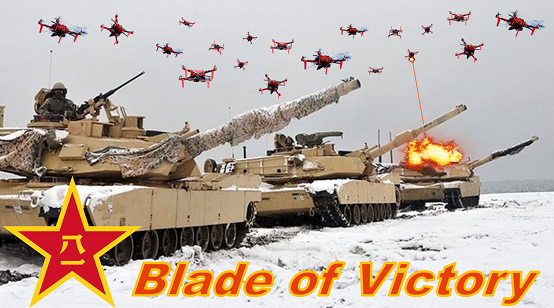
Drone swarms can also be used to conduct tactical deception and interference, reconnaissance, and “smart coordination.” For example, they can act as decoys to trigger enemy radar and air defense weapons to react and therefore expose their positions. This strategy can be likened to one of China’s 36 ancient stratagems, “Beat the grass to startle the snake,” an idiom that suggests taking just enough action to prompt the enemy to act and give away his strategy or position.
Finally, the authors describe ways that drone swarms can carry out reconnaissance to obtain enemy intelligence, and “smart coordination” in which drones “lead in battlefield reconnaissance and the elimination of targets.” However, the authors argue that drone swarm operations cannot operate completely independent of man. In situations deemed more risky to lives, due to their lower cost and versatility, a large number of drones can be used in front-line operations while a manned platform can provide “command and control of the drone swarms from the rear, guiding the swarms to strike targets in complex, high-risk areas.” End OE Watch Commentary (Hurst)
“Drone swarms will likely become the “blade of victory” in the hands of commanders at all levels on the future battlefield.”
Source: Xu Weiwei and Li Huan, “无人机集群作战的主要样式 (The Main Types of Drone Swarm Warfare),” Jiefangjun Bao, 23 January 2020.
The Main Types of Drone Swarm Warfare
…Drone swarm operations are emerging as an important form of intelligentized warfare. In the future, drone operations will become the “advance guard” in a battle between two armies. Drone swarms will likely become the “blade of victory” in the hands of commanders at all levels on the future battlefield.
…From their inception, drone swarm operations have always had many exceptional advantages over conventional operations. (1) …Drone swarms can be flexibly organized into different units. They can adapt to different environments, possess different functions, and perform different tasks… (2) … After equipping  drones with different combat modules, a drone swarm formation can have multiple functions, such as reconnaissance and surveillance, soft and hard strikes, and combat assessment… (3) …Drone swarm operations can quickly transmit battlefield information and accurately implement commanders’ intentions… (4) …An individual drone has several advantages, such as being a small target, the ability to withstand impact, large overload capacity, maintaining flight under silent mode, and effective concealment on the battlefield, etc… (5) …A drone swarm operation eliminates the limitations of human-operated machines. There is no need to install complex safety systems and protective facilities to ensure safety of personnel… (6) In the course of drone swarm operations, an individual drone’s dependence on logistics and support is low…
drones with different combat modules, a drone swarm formation can have multiple functions, such as reconnaissance and surveillance, soft and hard strikes, and combat assessment… (3) …Drone swarm operations can quickly transmit battlefield information and accurately implement commanders’ intentions… (4) …An individual drone has several advantages, such as being a small target, the ability to withstand impact, large overload capacity, maintaining flight under silent mode, and effective concealment on the battlefield, etc… (5) …A drone swarm operation eliminates the limitations of human-operated machines. There is no need to install complex safety systems and protective facilities to ensure safety of personnel… (6) In the course of drone swarm operations, an individual drone’s dependence on logistics and support is low…
…The basic method of multi-domain attacks is to use a drone swarm platform to carry a large number of individual drones. During the battle, the drones are launched or deployed through the platform as battle groups to achieve data sharing, flight control, situational awareness, and intelligentized decision-making, so that the drones can flexibly respond to battlefield contingencies and conduct various combat missions, such as swarm reconnaissance, fighting, and attacks. The domains in which attacks by a swarm operation take place will be across all domains: on land, at sea, in the air, in space, along the electromagnetic spectrum, and in cyberspace. …
…Based on mission needs, a drone swarm can be flexibly configured with various modules, such as modules for reconnaissance, information processing, and missile firepower, thereby forming a composite formation with reconnaissance, interference, and strike capabilities. Alternatively, several drone swarms can each be configured with reconnaissance and firepower modules, forming a large assault formation that penetrates deep into enemy territory and conducts real-time reconnaissance and strikes on key or high-risk targets, thereby achieving strategic operational goals.
If you enjoyed this post, check out the following:
OE Watch, March 2020 issue, by the TRADOC G-2’s Foreign Military Studies Office (FMSO), featuring the two aforementioned articles, along with a host of other items of interest.
Competition in 2035: Anticipating Chinese Exploitation of Operational Environments
Newer Is Not Better, Better is Better, by Gary Phillips
Jomini’s Revenge: Mass Strikes Back! by proclaimed Mad Scientist Zachery Tyson Brown.
China’s Drive for Innovation Dominance and Quantum Surprise on the Battlefield?, by Elsa Kania
A Closer Look at China’s Strategies for Innovation: Questioning True Intent, by Cindy Hurst
Critical Projection: Insights from China’s Science Fiction, by Lt Col Dave Calder

